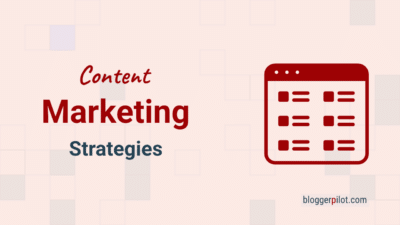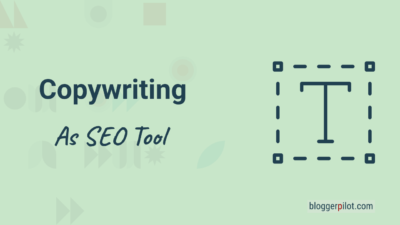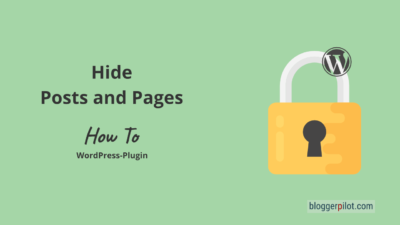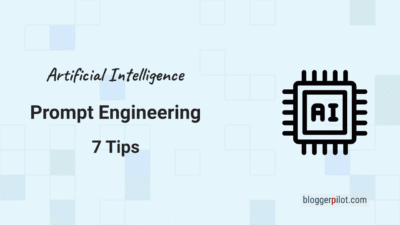Content and Content Types Explained
What is content and what types of content are there? If you’ve ever asked yourself this question, you’ve come to the right place. I would also like to introduce you to 6 important article types. Look here if you’re interested in content marketing.
What is content?
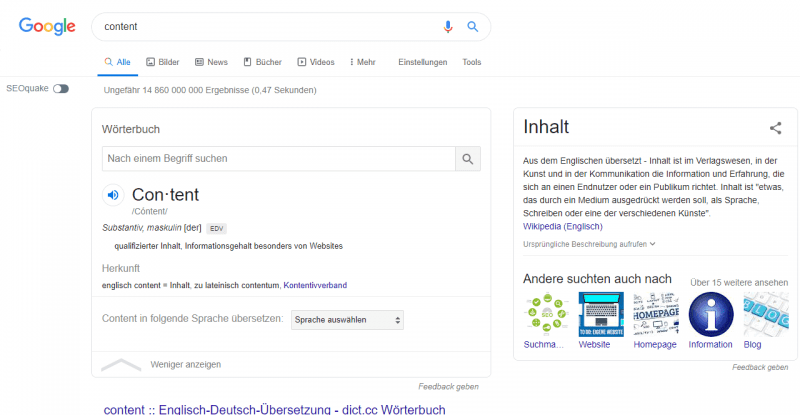
First of all, “content” is an English word with many meanings. From school you might still have translations like content, salary, version assets, share, but also satisfaction or household goods in your head.
But when copywriters, marketers or website operators talk about content, they mean the content of a website. For most websites, this is text and images, but for sites like YouTube, it’s almost exclusively video.
Content is:
- Texts
- Images
- Videos
- Audios
- Links
- Downloads
- interactive content
And all other content of an online presence.
The content, i.e. website content, thus turns an empty web server response into an informative website.
The English word “content” is now used in German-speaking countries just as it is in England or the USA. However, only in circles where this word is used professionally. This has already become common practice in the scene many years ago.
What is good content?
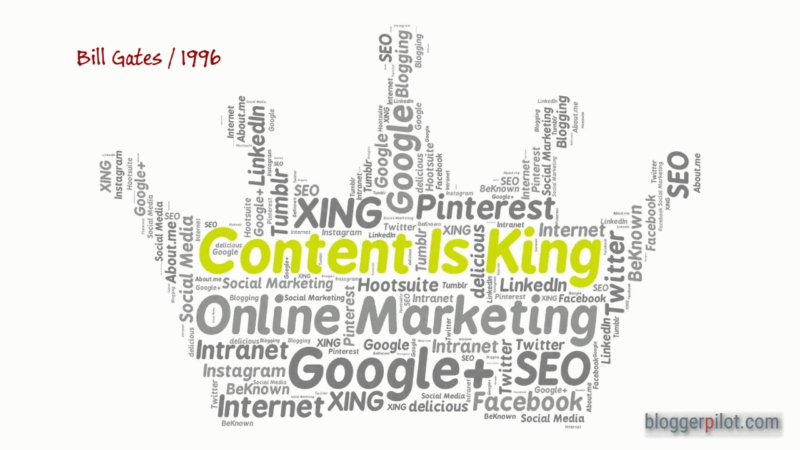
The question “What is good content?” is not so easy to answer.
However, one thing is worth noting. The software mogul Bill Gates had already recognized in 1996 that content is the most important thing.
Bill Gates / 1996
First of all, good content must be truthful and honest. Equally important is form and accuracy. If you include five spelling mistakes in every sentence, readers will quickly run away.
An article is successful if it solves a problem. Therefore, always remember:
Content must be helpful!
You have already achieved one thing: You offer added value.
However, in order for your articles to be listed well on Google, at least the basic rules of search engine optimization (SEO) must be understood and implemented. For example, Google does not like texts that are too short. Many evaluations have shown that articles with significantly more than 1,000 words can be found more often at the top search engine positions.
Loosen up your text with paragraphs, pictures, videos or quotes. It is also very important to structure your text with headings and subheadings so that the individual sections are immediately recognizable. It is best to create this framework before you start writing.
Your texts should not only consist of dry, boring facts. Let your character and charm flow into it.
Good content is up to date! So revise your Conerstone content regularly and show the update date.
What are the content types or content kinds?
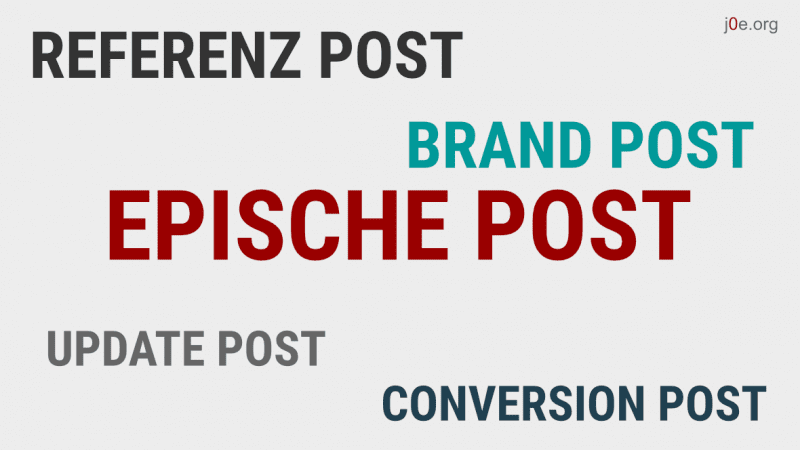
It’s simple: the more you post and publish on your blog, the more people you attract and thus increase your traffic. This general observation in the field of content marketing is confirmed by many observations and studies. The general principle is: post early, post often. But what kind of content is needed? And what good is more traffic to you if, despite this, the conversion rate doesn’t increase, the number of clicks, leads and referred sales doesn’t increase?
6 important types of articles
We will show and explain to you here those 6 types of articles that you should definitely write and post regularly on the web. Just knowing this will make it much easier for you to decide what to do next. If you stick to the described approach, the result will most likely be a strong blog that attracts a lot of traffic and builds and supports you and your brand.
So, in order to not only score points on some intemperate statistics of your website, but to really advance your business and business interests, you need to be strategic about your blog content. Use the right blog article types!
No matter what type of article you write. Once published, you should share it on social media like Facebook and Instagram.
1. The epic post
The content type stands for long, detailed, in-depth content that is of special interest to readers and has special added value. By all accounts, longer blog posts typically rank higher on Google and other search engines and generate comparatively more traffic. Epic content is where the wheat is separated from the chaff.
For example, we’re talking about an ultimate guide to something. Like this article here is the ultimate post about content and content types.
But it can also be things you’ve dealt with yourself and/or figured out something on your own. Or even about original and original content, like very special tips that don’t exist anywhere else on the web. You will surely come up with a suitable topic. The work you put into it will certainly pay off. In the best case, people will drop everything later to read, share and link to the post. Epic posts grab attention and put your blog in the spotlight.
By the way, with posts like this, you should give special thought to the copywriting, how you present this form of content to your readers and prepare it for them. In any case, a massive wall of text doesn’t work at all – it only provokes click and go
, and you’re rid of the readers and thus the potential clientele.
2. The Conversion Post
Conversion basically refers to everything that is aimed at getting readers interested in the offers you offer by means of the blog post. These can be:
- Tutorials and application examples, that is, how to use these products and use them for specific purposes.
- Reports from customers who have used your products successfully and with good results, or who have used your services to their satisfaction.
- Content that is closely related to any courses, lessons, or information services you offer.
Simply put, a conversion post has as its content what is in obvious use to promote your product or services. Of course, the content itself has to be of use and value to the reader, otherwise it doesn’t serve its purpose – this isn’t about putting up a badass ad as a blog post. Rather, you’re cleverly introducing your online marketing to readers via this content type and making it easy for them to become customers.
3. The Brand Post

You are your brand – here comes the opportunity to score with your personality. Tell your story, write what you believe in, share with your readers what drives you and what other goals you have in mind. What grabs you? What touches you? What makes you angry? What ignites your passion?
Bring your product or service out of anonymity and give it a face – your face! This type of content helps readers identify with your business; you build a personal connection with them and appeal to emotions. It’s important!
It’s about the difference between a random, cold business that no one can care about, and a business like yours that people can then actually care about and, in the best case scenario, feel connected to and identify with. Use the Brand Post to promote yourself and your product.
Readers you appeal to emotionally will come back!
Also show your mistakes or weaknesses. Your visitors will love you for it!
4. The Reference Post
A reference post is usually simple and short, and deals with a singular, content-related point in a self-contained manner.
When you write your blog post, pay attention to whether you keep referencing and explaining certain things in your content – single terms, labels, data, concepts, theories, strategies, items, approaches, or the like. Instead of repeating yourself over and over again or referring to an external source, such as Wikipedia, each time, it’s better to make the effort to create your own reference and link to it.
Not only do you have the advantage that you can design the reference post according to your personal needs and align it with the requirements of your business, but you also generate additional internal links and thus more traffic. Plus, people will then stay on your website, which is where you want them to be.
Remember, bloggers appreciate every link. It’s how you draw attention to yourself and get linked to next time.
5. The Update Post
I definitely recommend:
- You should basically update and improve everything you offer on a regular basis.
- You should present these updates and improvements promptly in your blog and write about them.
This goes without saying for software, but other types of products as well as services need to be constantly refreshed and adapted to changing circumstances.
Customers expect that!
In return, they usually react very positively to any further development. Moreover, improvements, new properties and features arouse curiosity and increased interest. This is good for any business.
Regular updates about you and your product or service also build trust with potential customers. Plus, updates always generate additional content, which search engines love, after all.
People see that you care about what you offer, and they don’t have to worry about outdated storefronts that they’re left alone with when something doesn’t work or doesn’t work anymore. That benefits your reputation and the reputation of your business.
By the way, when was the last time you reviewed your older blogposts?
6. The guest post
It’s not always easy to find the right target blog or writer for a guest post. However, this content type will push your blog forward!
You should definitely make the effort though. Guest posts not only network your blog, but also yourself with bloggers from your niche. In doing so, you’ll not only get a link, but maybe even a friend in the larger blogosphere.
You can use the guest post in two ways:
You can ask another site owner if you can publish an article with them. In doing so, you can usually include a link to your site.
Or you can invite someone else to publish an article on your site. Your profit is free content and the already mentioned networking.
Publication Frequency
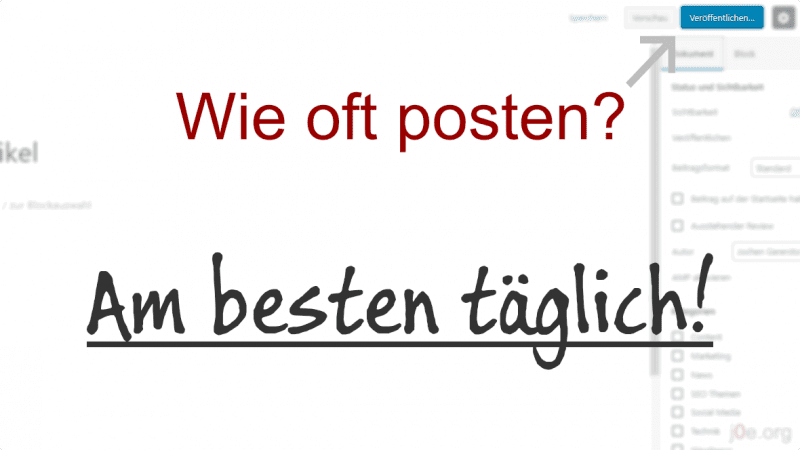
You now know the 6 blog post types you should definitely write. – Next, the question becomes: how often should you write?
Daily is best!
More frequent publications usually lead to more traffic. From this, it can be concluded that as long as your content is worthy and brings something to the readers, you can’t actually post too much. Rather, it’s a matter of your resources and incurred costs. Researching and writing takes time, and you may not be writing yourself, but having someone write for you for a fee. You’ll have a harder time as a lone wolf than in a team, where the burdens are shared among several shoulders.
Incidentally, it’s a good idea to decouple writing and publishing a bit. Apart from update posts, which should understandably be posted in the immediate context of the update in question, it doesn’t hurt to have a few posts in reserve. While a regular publishing schedule is good for search engine rankings and readers – humans are creatures of habit – forcing yourself to write behind a schedule adds unnecessary stress, which usually has a negative impact on the quality of your posts. If possible, write when you have the time and peace to do so, and then publish as you go.
Adjust the frequency of your publication to your marketing strategy.
It’s all in the mix
Epic posts are tempting, not least because of their potential impact, but you’re easily put in danger of getting bogged down, bogged down, and overextending your resources. The time commitment here is comparatively high, your standards must be as well if you want to succeed with this form of content. So if you’re writing your posts yourself and don’t already have a certain amount of experience in this sort of thing, it’s best to avoid it for the time being and approach this task slowly. If you don’t have any problems with epic posts, we would like to advise you not to exceed an upper limit of 10% of the total blog.
Update posts should simply be as frequent as possible. – You can consider splitting the total text and dividing it into several posts. This obviously increases the frequency of publication and is especially useful if the update is more extensive and the readers might lose track of the text with so many new things. Without any further development, update posts naturally fall flat.
Brand posts are especially important at the beginning, when you are new with your business and no one knows you and your offer yet. Tell about yourself, post your story – it’s a great way to introduce yourself to the world and potential clientele and get known that way. Once you are through with the basics, the number of such posts will decrease as expected. After all, nothing changes what has already been said, and repetition is unnecessary. Still, don’t forget to check with each new post to see if you can usefully link to older posts, especially Personality posts.
Reference posts become more important once your blog has grown significantly in length, verbosity, and complexity. Most of the time you won’t write a reference on your own, but you may notice when publishing other content that such a post is appropriate in this context. And if you keep linking to the same external pages, it should really be time to put your own reference post online instead.
Conversion posts turn readers into customers – here’s your business, here’s where your business lies. You should aim to have at least half of your overall blog be value-added content that can pay for itself immediately through conversion.
I wouldn’t allowguest posts on a weekly basis right now. But that also depends a lot on the nature of your site and the topic. It’s best to let articles from other bloggers come to you naturally.
Use successful blogposts also for your email marketing. Even if you don’t have many visitors yet, it’s worth starting early.
Content FAQ

More on the topic of content:
On your mark, get set, go!
Congratulations. We’re through
You’re all set now, and you’ll be looking at your blog with different eyes. And if you’re just starting out, you certainly won’t make a mistake and go astray with these 6 key blog post types you should definitely write. You can get started now with peace of mind.
Good luck!
PS.: Which article types do you prefer to use?

